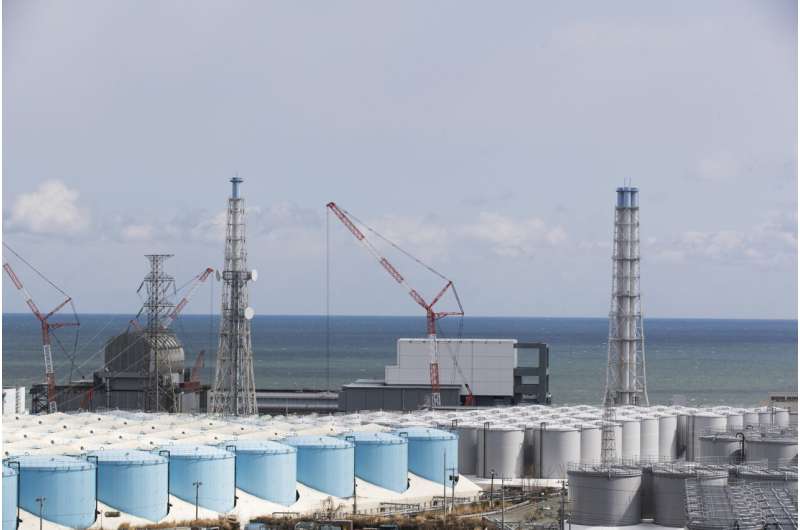UN team: Unclear if Fukushima cleanup can finish by 2051

Too little is known about melted fuel inside damaged reactors at the wrecked Fukushima nuclear power plant, even a decade after the disaster, to be able to tell if its decommissioning can be finished by 2051 as planned, a U.N. nuclear agency official said Friday.
“Honestly speaking, I don’t know, and I don’t know if anybody knows,” said Christophe Xerri, head of an International Atomic Energy Agency team reviewing progress in the plant’s cleanup.
He urged Japan to speed up studies of the reactors to achieve a better long-term understanding of the decommissioning process.
A massive earthquake and a tsunami in March 2011 destroyed cooling systems at the Fukushima plant in northeastern Japan, triggering meltdowns in three reactors in the worst nuclear disaster since the 1986 Chernobyl accident. Japanese government and utility officials say they hope to finish its decommissioning within 30 years, though some experts say that’s overly optimistic, even if a full decommissioning is possible at all.
The biggest challenge is removing and managing highly radioactive fuel debris from the three damaged reactors, said Xerri, the director of IAEA’s Division of Nuclear Fuel Cycle and Waste Technology.
“We need to gather more information on the fuel debris and more experience on the retrieval of the fuel debris to know if the plan can be completed as expected in the next 30 years,” he told reporters.
The cleanup plan depends on how the melted fuel needs to be handled for long-term storage and management, he said.
The IAEA team’s review, the fifth since the disaster, was mostly conducted online due to the coronavirus pandemic. Only Xerri and another team member visited the plant this week before compiling and submitting a report to Japan’s government on Friday.
In the report, the team noted progress in a number of areas since its last review in 2018, including the removal of spent fuel from a storage pool at one of the damaged reactors, as well as a decision to start discharging massive amounts of treated but still radioactive water stored at the plant into the ocean in 2023.
Although there now is a better understanding of the melted fuel inside the reactors, details are still lacking and further research should be expedited, the report said. The team encouraged Japan to allocate sufficient resources to prepare for measures beyond the next decade through the end of the decommissioning.
Research and development of new technologies needed for the cleanup will take one or two decades, Xerri said, urging Japan to apply additional resources as early as possible.
The report advised Japan to prepare full plans not only for the cleanup of the melted reactors but also for the entire decommissioning, and a clearer end-state picture.
“It is important in any projects to have targets and to have objectives and to have a vision,” Xerri said.
Government officials and the plant operator, Tokyo Electric Power Company Holdings, have not provided a clear picture of how the plant will look when the cleanup ends.
In April, Japan announced it will start releasing into the sea large amounts of treated but still radioactive water that has accumulated at the plant since the accident. TEPCO on Wednesday announced a plan to release the water offshore via an underground tunnel after further treating it to reduce radioactive materials to allowable levels.
IAEA has agreed to help facilitate the decommissioning and cooperate in the monitoring and implementation of the water disposal. A first IAEA mission on the water disposal is expected to visit Japan in September.
© 2021 The Associated Press. All rights reserved. This material may not be published, broadcast, rewritten or redistributed without permission.
Citation:
UN team: Unclear if Fukushima cleanup can finish by 2051 (2021, August 27)
retrieved 27 August 2021
from https://techxplore.com/news/2021-08-team-unclear-fukushima-cleanup-finish.html
This document is subject to copyright. Apart from any fair dealing for the purpose of private study or research, no
part may be reproduced without the written permission. The content is provided for information purposes only.
For all the latest Technology News Click Here
For the latest news and updates, follow us on Google News.

